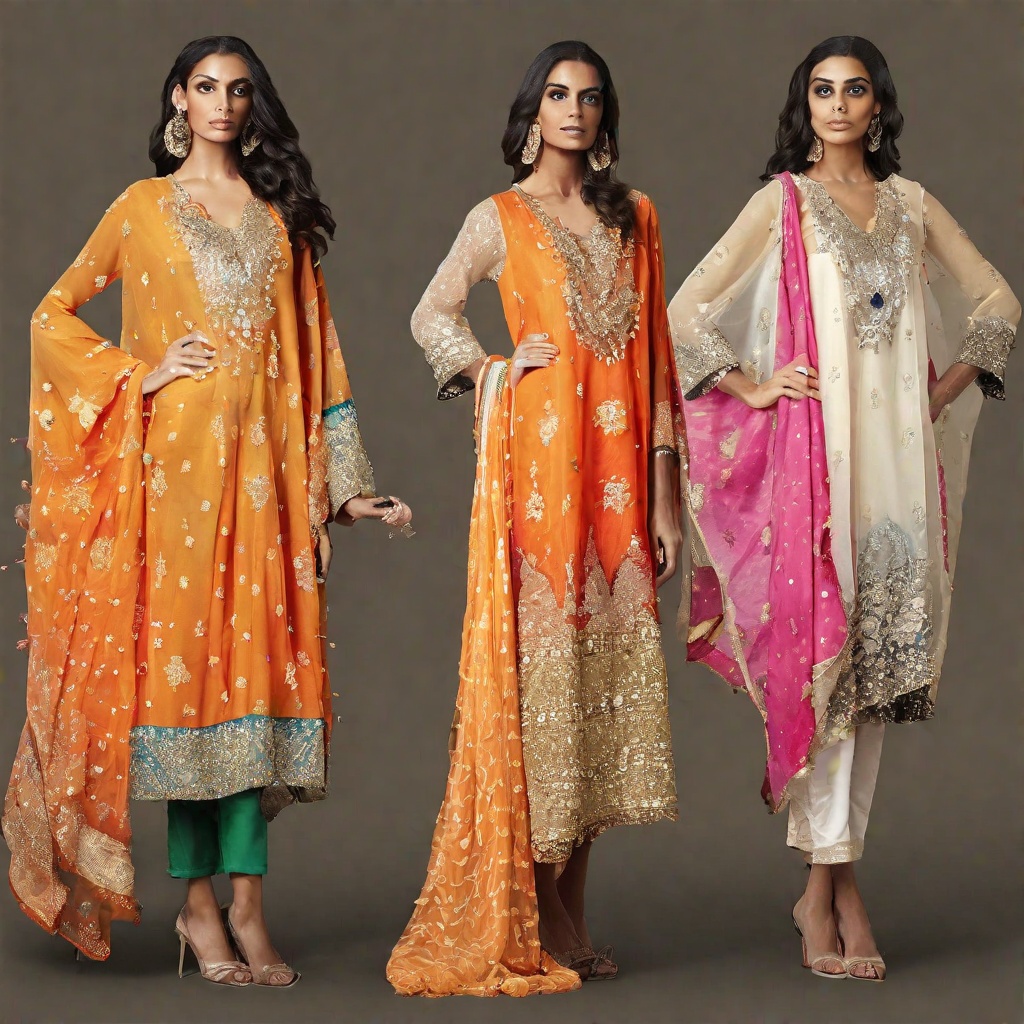Introduction of Mukesh & Kamdani Duppata
In the world of ethnic fashion, the allure of traditional craftsmanship continues to capture hearts and minds. Among the myriad of exquisite handwork techniques, Mukesh and Kamdani threadwork stand out as timeless treasures that add an unparalleled charm to Indian attire. These intricate embellishments, often found gracing dupattas, create a visual symphony that complements every occasion. Let’s delve into the world of Mukesh and Kamdani dupattas, exploring their origins, craftsmanship, and how these threadwork wonders can elevate your style for any event.
Mukesh Embroidery: A Legacy of Sparkle
Mukesh: A Glimpse into Its History
Mukesh embroidery, also known as Badla work, has a rich history dating back to the Mughal era. Originating in the heart of India, particularly in the cities of Lucknow and Varanasi, this art form has been passed down through generations. Named after the fine metallic thread used in the embroidery, Mukesh work was initially a symbol of regality and opulence.
Craftsmanship and Technique
The magic of Mukesh embroidery lies in the meticulous craftsmanship involved. Skilled artisans delicately weave metallic threads, often silver or gold, into the fabric to create intricate patterns. These patterns can range from geometric designs to floral motifs, adding a touch of glamour to the garment. The reflective quality of the metallic thread imparts a subtle shimmer, making Mukesh embroidery perfect for festive occasions.
Versatility in Occasions
One of the standout features of Mukesh embroidery is its versatility. Whether it’s a grand wedding, a cultural celebration, or a casual gathering, Mukesh dupattas effortlessly elevate the overall look. The sparkling allure of Mukesh embroidery makes it a favorite choice for bridal wear, where brides can showcase the richness of this craft on their special day.
Kamdani: The Art of Tiny Stitches
Kamdani: A Time-Honored Tradition
Kamdani, also known as ‘Kasab,’ is a traditional form of hand embroidery that traces its roots back to the Indian subcontinent. This intricate craft involves the use of very fine needles to create tiny, exquisite motifs. The word ‘Kamdani’ itself translates to ‘tiny work,’ and true to its name, this art form is characterized by its delicate and intricate stitches.
Craftsmanship and Technique
The hallmark of Kamdani lies in the tiny, intricate stitches that create a stunning play of patterns on the fabric. Artisans skillfully work with metallic threads, sequins, and beads, adding an ethereal touch to the garment. The beauty of Kamdani lies not only in the final product but also in the patience and precision required during the creation process.
From Casual to Celebratory
Kamdani dupattas are incredibly versatile, making them suitable for a wide range of occasions. The subtle elegance of this embroidery can seamlessly elevate casual attire, providing a touch of sophistication to everyday wear. At the same time, the opulence of Kamdani makes it an ideal choice for festive occasions and celebrations, allowing wearers to make a statement without being too ostentatious.
Harmony of Mukesh and Kamdani: Fusion Elegance
Blending Mukesh and Kamdani
Fashion is ever-evolving, and the fusion of traditional crafts has become a trend that resonates with modern sensibilities. Combining Mukesh and Kamdani embroidery in a single piece creates a harmonious blend of sparkle and subtlety. This fusion allows for a unique and contemporary aesthetic that appeals to a diverse range of tastes.
Perfect for Special Events
The combination of Mukesh and Kamdani is particularly well-suited for special events where a balance between tradition and modernity is sought. Whether it’s a cocktail party, a sangeet ceremony, or a formal gathering, the fusion of these two exquisite threadwork styles ensures a distinctive and memorable look.
Styling Mukesh & Kamdani Dupattas
Casual Chic
For a casual yet elegant look, pair a Kamdani dupatta with a simple kurta and palazzo pants. The subtle shimmer of the Kamdani embroidery adds a touch of sophistication to the casual ensemble, making it suitable for a brunch or an afternoon gathering.
Festive Glamour
Mukesh dupattas, with their dazzling metallic threadwork, are perfect for festive occasions. Pair a Mukesh dupatta with a vibrant lehenga or an Anarkali suit to create a festive look that exudes glamour. The reflective quality of Mukesh embroidery adds a festive sparkle that is sure to turn heads at any celebration.
Bridal Elegance
For brides who want to make a statement, a combination of Mukesh and Kamdani on their dupatta is a winning choice. Whether draped over a lehenga or paired with a bridal saree, this combination adds a regal touch to the bridal ensemble. The intricate detailing of Kamdani complements the grandeur of Mukesh, creating a look that is both timeless and contemporary.
Conclusion
In the world of ethnic fashion, Mukesh and Kamdani dupattas stand as testament to the timeless beauty of traditional craftsmanship. From the regal allure of Mukesh embroidery to the delicate charm of Kamdani, each thread tells a story of artistry passed down through generations. The fusion of these two styles adds a contemporary twist to the classic, making them versatile choices for every occasion. Whether you’re attending a casual gathering, a festive celebration, or your own wedding, the magic of Mukesh and Kamdani threadwork is sure to make you shine, creating a style that is as unique and unforgettable as you are.

